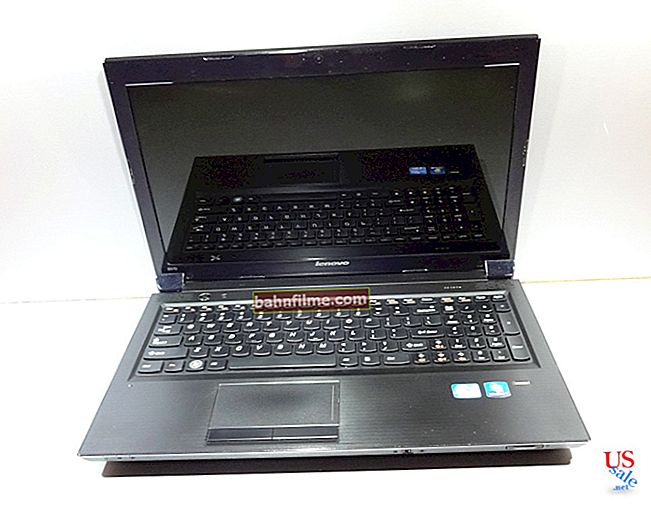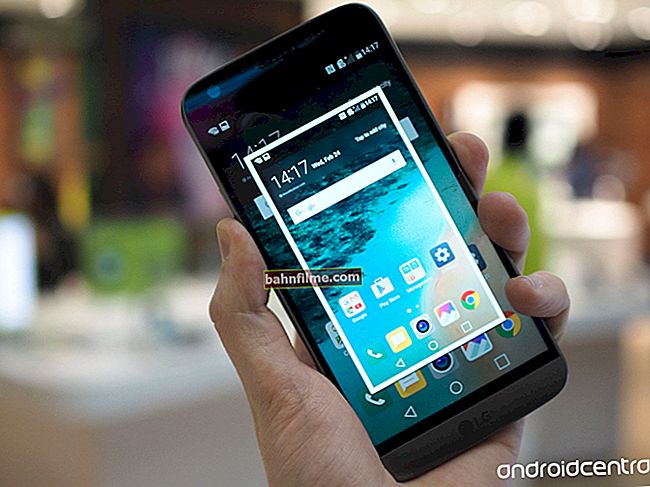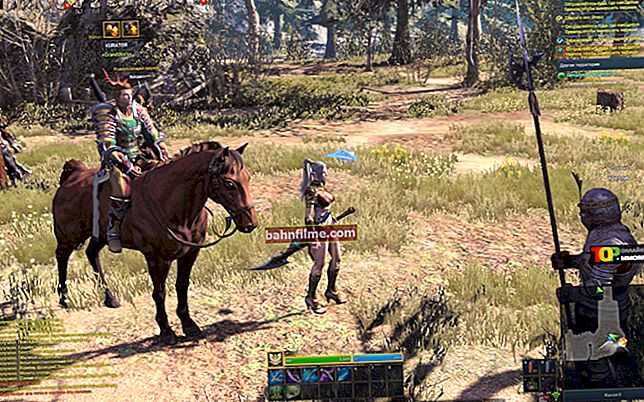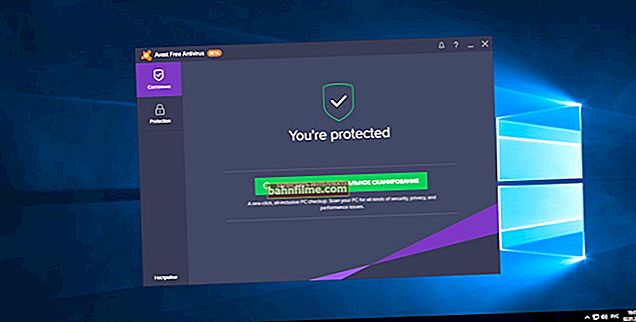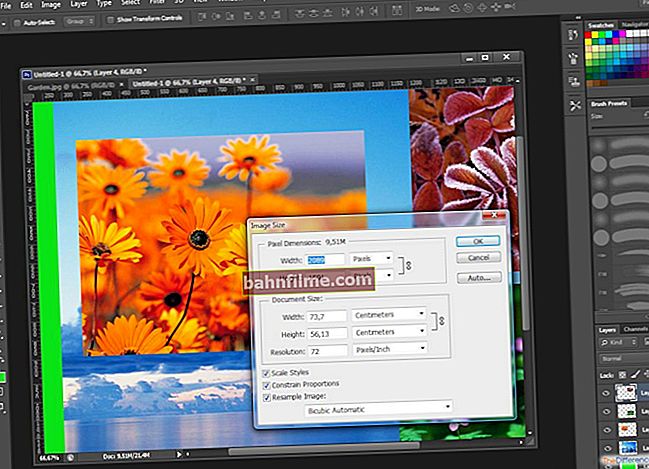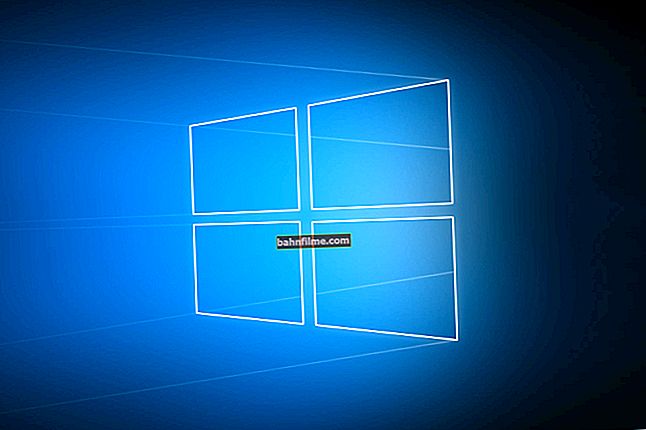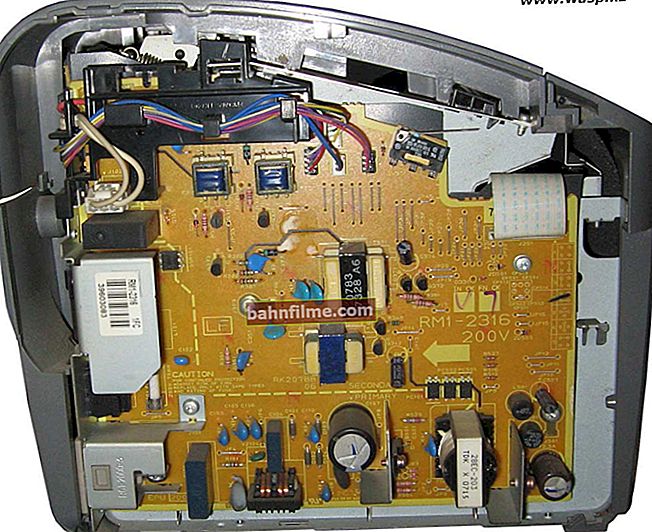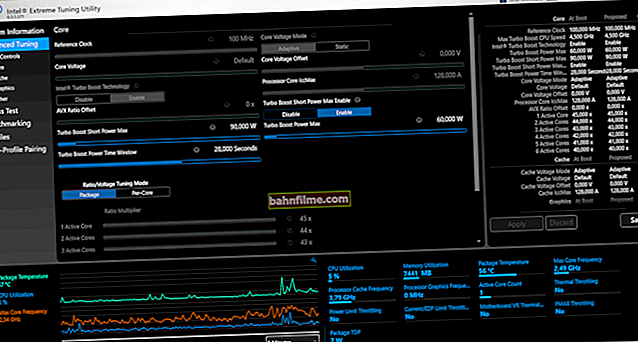 Good day!
Good day!
Basically, you don't even think about the speed of USB devices until it comes to copying (reading) files. And here ... sometimes there comes a "wild" surprise, why the speed of USB is so low ...
In this article I will show, firstly, how you can check and find out the real speed of the USB port and device, and secondly, what can be done to increase this very speed. I think that for those users who often copy various data to USB-drives - the information will be very useful.
Note!
By the way, now it is quite convenient to use cloud disks (instead of flash drives) to transfer information. Those. There is no need to carry anything with you: you can access your files from any PC with Internet access. You can find out how to set up a cloud disk here - //ocomp.info/kak-podklyuchit-oblachnyiy-disk.html
Now on the topic ...
*
Checking the speed of a USB device
Option 1
With HD Tune
Officer. program website: //www.hdtune.com/

Multifunctional program for working with disks (HDD, SSD), flash drives, etc. drives. Allows you to conduct various tests: scanning for errors, viewing S.M.A.R.T. readings, monitoring temperature, checking the speed of external drives (for example, connected via USB), the ability to reliably delete all data, and much more.
In this article, I will only touch on one possibility: a quick test of the speed of the connected drive to USB. How this can be done (see also the screen below):
- first download, install and run the program (I do not quote this in the article, because it is standard) ... In the top menu, select the disk / flash drive you want to test;
- open the "Benchmark" tab (number 2 on the screen);
- choose what speed you want to test: read or write;
- click the "Start" button and wait a few minutes (important! Before the test, close all programs that can load the disk, for example, torrents, video editors, etc.);
- after completing the test, look in the "Average" field - this is the average reading speed. You can also focus on the schedule that will be built. In my case (see the screenshot below) the average speed is ~ 32.5 MB / s (not much, but quite good for an old disk).

HD Tune - How to Test Disk Speed / Clickable
Important!

By the way, many users confuse Mbps and Mbps (including when testing USB speed). If you do not fully "catch" the difference, I recommend that you familiarize yourself with this material: //ocomp.info/skolko-megabit-v-megabayte.html
Option # 2
Using USB Flash Benchmark
Officer. website: //usbflashspeed.com/

USB Flash Benchmark - the fastest flash drives at the moment
This utility is more intended for testing the speed of flash drives. (at least, this is how it positions itself. Note that it also copes well with external HDDs) ... Automatically tests both write speed and read speed. Doesn't need installation, it's free. On the officer. the site you can see the results of your test, and compare it with other models of flash drives (by the way, thanks to the tests on their website, you can find and buy yourself a fast flash drive) .
As for starting testing: after downloading the utility, extract it from the archive and run the executable file. Then select the drive and click the "Start ..." button in the left menu. In general, it's still easier than with the previous program.

External HDD test results / Clickable
As for the results: they are displayed on the graph as a "broken" straight line (depending on the size of the files that are involved in reading / writing to the disk, the speed changes! As can be seen in the graph, see the screen above).
*
How you can improve your USB speed
1) Instead of copying many small files, copy one big ...
Probably, almost all experienced users noticed that when copying / reading many small files (for example, pictures), the speed drops, and very significantly (since the system has to index a place for each file *) ... And according to the test results, this can be seen, take at least a screenshot from the USB Flash Benchmark program (located above).
From this, a simple conclusion: if you work with many small files, add them to the archive, and only then copy them to an external disk / flash drive. Yes, you will spend some time packing, but you will save a lot when copying ...
Note! How to pack files into an archive - //ocomp.info/kak-raspakovat-arhiv-rar-7z.html#i-2
By the way, I also want to note that if we are talking about pictures, then later (if you have archived them) you can view them directly from the archive without extracting it. To do this, just install one of the specials. programs: //ocomp.info/kak-prosmatrivat-foto-v-arhive.html
2) Connect flash drives, disks to USB 3.0 ports (if there is USB type-C, you can connect to it).
Many laptops and PCs have both USB 3.0 (3.1) ports and USB 2.0 (they are compatible - ie a flash drive / disk will work when connected to both ports. But the speed can vary significantly!).
Outwardly, usually, they are different in color (USB 3.0 are marked in blue, see examples below). Of course, a lot still depends on the connected drive itself, but nevertheless ...

Ports: USB 2.0 and USB3.0

One more example. USB 2.0 and USB3.0 (marked in blue)
On new laptops, by the way, you can find only 1 USB 3.0 port and 1 USB type-C port (or generally only USB type-C). If you have such a case, then you can purchase specials. adapters from USB Type-C to USB 3.0 (there are a great many variations of them, one of the examples in the screenshot below).

Adapter USB Type-C to HDMI, GbE, USB 3.0
Note! You can buy various adapters cheaply in Chinese online stores: //ocomp.info/kitayskie-internet-magazinyi.html
3) If your PC / laptop is old enough and does not have (or not enough) USB 3.0 ports
If you do not have enough USB 3.0 ports, you can purchase a special. "PCI-E Express Card" card, plugging it into a free slot, you will get 3-4 ports at once.

Uspeed USB 3.0 PCI-E Express Card
By the way, for old laptops (where, in principle, there is no USB 3.0), for example, you can purchase special. gadgets (mainly in Chinese online stores), under the Expresscard slot (see an example of this in the screenshot below).

Such a gadget for an Expresscard slot will allow you to have USB 3.0 on an old laptop
4) Check if you have installed drivers for the USB 3.0 hub (motherboard).
It is not uncommon when the lack of drivers is the reason for the low-speed operation of the device. For example, you may not have an updated driver for a USB controller (ie, the "universal" option is used, which was delivered during the installation of Windows) ... As a result, the USB ports operate at a lower speed than they could potentially.
Driver update options:
- if you still have a CD / DVD disc with drivers (which came with the purchase of a PC), then use it, this is the best option;
- you can see the model / characteristics of "pieces of iron" in the spec. utilities, and then download the required driver versions from the official website of their manufacturer;
- use the specials. utilities to update drivers. They will automatically find and install not only the drivers, but also all the necessary components (DirectX, Frame Work, for example) that are necessary for the normal operation of the system.
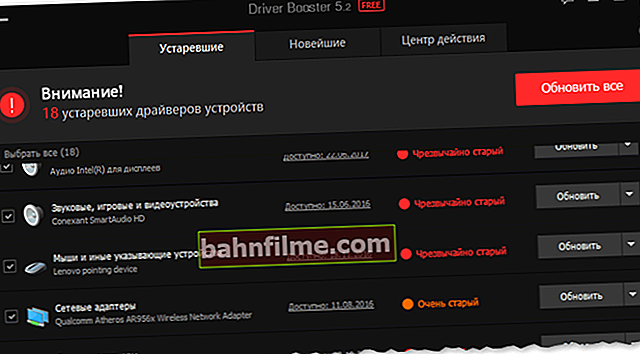
Driver Booster - found 18 outdated drivers // example of the program
5) If your external HDD slows down when downloading files ...
Many users buy external HDDs for movies, TV shows, games, etc. media content, connect them to USB and download files to them using torrent programs. Often, the download speed drops to zero due to the heavy load on the disk ...
The point here is that several files are being downloaded at once. (note: even one torrent can contain dozens of files) ... To fix this, in the settings, limit the maximum number of active torrents to 1-2 (max. 3), and limit the maximum download speed (set experimentally).
Note! I also recommend that you read one of my articles, in which I show the "tricky" settings that help reduce the load from uTorrent on the hard drive - //ocomp.info/hdd-peregrujen-100.html

uTorrent - Maximum Concurrent Downloads / Clickable
6) It is possible that you have purchased a "low quality" drive, and it, in principle, is already working at its maximum
And the last thing. It is possible that you have a slow copy / read speed of data from the drive due to its poor quality. This most often happens with very cheap devices ("no-name" brands made in China). In order to estimate the speed of the future drive in advance when buying, look at specialized sites for tests of different drives. For example, on the same USB Flash Benchmark (see screen below). After that, order yourself a similar flash drive / disk.

USB Flash Benchmark - the fastest flash drives at the moment
*
All the best!


